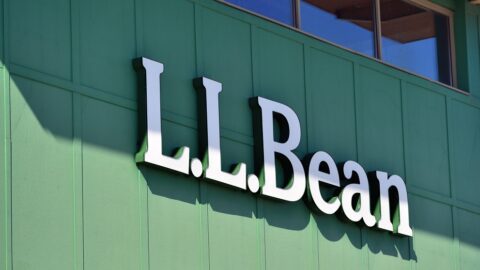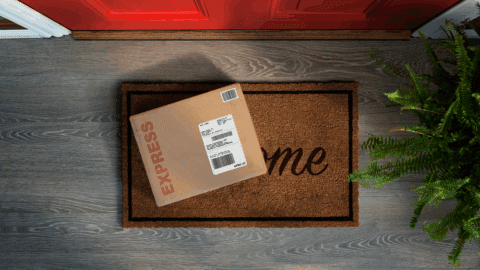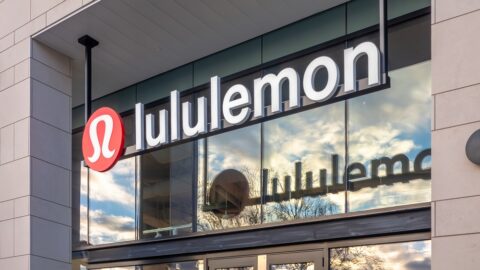For years, pop-up shops have been embraced by merchants that sell holiday-themed or seasonal products. But retailers of all sizes are now leveraging these limited-time stores to pique consumer interest, drive brand awareness and test their businesses in new markets.
Landlords also are warming up to the pop-up concept, due to the traffic surge some neighborhoods get when new stores open and the chance that they can turn a short-term lease into a long-term opportunity.
“The more traffic a pop-up gets, the more people it brings to the space,” said Katherine Hill, Director of Offline at BaubleBar, in an interview with Retail TouchPoints. “Both parties benefit. The company gets the space and the landlord will get prospective clients who may want to rent out the space for their own purposes.”
Brands that plan, launch and maintain pop-up stores with the right strategies will find that they are valuable tools for experimentation, branding, advertising, storytelling and demand generation.
“One of the most captivating features about pop-up retail stores is their ability to pique consumers’ curiosity and satisfy their desire for novelty,” noted a Spire Research report. “The pop-up retail model is such that it can be present in a district for a short period of time, before it disappears and resurfaces weeks or months later. When it resurfaces, the store can be completely re-furnished with an entirely new format and set of merchandise, providing consumers an alluring element of surprise.”
Introducing A Brand Through Pop-Up Shops
Since pop-up stores are temporary, they are a cost-effective way for retailers to test products in specific markets, as well as experiment with new in-store strategies.
“A lot of brand marketers and retailers will take the opportunity to look at pop-ups and do research,” said Bryan Duffy, EVP of Sales and Marketing at MKTG INC. “They’ll do things like product testing, consumer insight and launch limited-edition items. In a finite period of time, you can garner qualitative and quantitative measurable results.”
Pop-up stores also are an effective way to tell the story of a brand and make it more tangible to consumers — which can be a challenge for pureplay eCommerce retailers. For example, BaubleBar is a relatively new brand that is trying to stand out in the competitive jewelry space. The eTailer is expanding its reach to the streets and now is relying on pop-ups to drive customer awareness and brand perception.
“We see about half of the people who walk in to our pop-up shops have never heard of our brand before,” Hill explained. “It’s a very strong customer acquisition channel for us. It’s our one chance to get new customers and explain who we are, what we’re all about and what we can offer them.” Shoppers who visit the BaubleBar pop-up shop also often bring friends, she added, which helps amplify the brand to more prospective customers.
Due to positive results of past pop-up locations, BaubleBar plans to invest in launching more locations nationwide, according to Hill. During June 2013, the now multi-channel retailer unveiled its second store in SoHo, New York City, and saw heavy traffic consistently through August 14, when it closed.
In another example, luxury ready-to-wear and lingerie brand Fleur du Mal saw success with a pop-up shop in New York City. “A pop-up store can show products in reality,” said Jennifer Zuccarini, Founder of Fleur du Mal, “People can touch and feel fabrics, try things on. Seeing items online is never going to be as effective as walking into a room and seeing it all there.”
Zuccarini added: “We’re a new brand so people are discovering us through the pop-up shop. We have organic shoppers that just walk past the store and think ‘I have to go in there.’ There’s no such thing as organic shopping online. People have to try and find you in some way.”
Getting Started With Pop-Ups
With a successful strategy in place, retailers that leverage pop-up shops can boost profits as well as brand awareness significantly. However, the temporary nature of these storefronts produces some unique challenges. Three key obstacles are: Location, Staffing and Store Design.
Location: Although more landlords are becoming receptive to the concept of pop-ups, this openness is mostly confined to New York City. Lower-profile retailers in other major cities can run into difficulties trying to find a good location.
Once a location is finalized, retailers must ensure they have Internet connection or Wi-Fi access. Some pop-ups, specifically ones that attach themselves to an already established brick-and-mortar location, such as a mall or larger store, don’t need to worry about this. But for pop-ups trying to secure a more remote or unusual locale like Central Park in New York City, Wi-Fi becomes a significant logistical hurdle.
“You need to have great connectivity at a pop-up site,” said Michael Wood, Director of Operations at Noerr Programs. “For some places, it can be difficult to set up a landline and Internet connection that is only set to operate for a short amount of time.”
Staffing: Staffing is a particular concern for pop-ups, because the overall “shelf life” of these employees is shorter. Additionally, the pool of candidates applying for pop-up store positions will typically be younger and less experienced.
To hire and retain the best staff, retailers must commit time to interviewing and training associates. In order for employees to acquire brand and product knowledge, retailers should have training manuals and training programs in place.
“If you can, try to get the store products into their hands as early as possible so it isn’t showing up on web sites,” said Duffy. “Let them play with the products and get intuitive with them so they can speak from an educated standpoint.”
Store Design: Store design also is a key element to pop-up success. “I think the challenge with pop-ups is that a lot of them look thrown together because they’re temporary,” Zuccarini said. “I’ve been to pop-ups where it just feels like a product in an empty room. You don’t want it to feel like a sample sale.” For the Fleur du Mal pop-up store, she explained that she and her team “wanted something that made the space feel like our own.”
Once Zuccarini chose a location for the Fleur du Mal pop-up, she and her employees furnished the space with vintage magazines, custom wallpapers and furniture.
Creating Innovative Pop-Up Experiences
Pop-up stores are still relatively new to the retail world, so retailers are continuing to find novel ways to execute them. Though there are some standard guidelines to follow, there is no one-size-fits-all strategy.
“It’s just a really innovative time,” said Michael Harvey, COO of e-Commerce Strategy and Implementation at Corra, an e-Commerce agency. “We’re going to see bigger pop-up shops, micro-pop-up shops and pop-up malls. The impermanence allows retailers to keep trying new things.”
As pop-up stores become more popular, consumers will demand more memorable and quality experiences, added Patrick Walsh, VP of Marketing at VILLA, a street wear retailer.
“Pop-ups have a narrow window of time that keeps them exciting but there’s also going to be a lot of new concepts,” said Walsh. “If someone tries to bring up a new or different pop-up, they have to elevate the experience.”
For example, VILLA is considering using a pop-up to host events such as basketball games and block parties, according to Walsh. Fleur du Mal also hosted an event for Bastille Day, the French national holiday, at the pop-up shop by featuring a live DJ and offering refreshments.
When Beats Electronics opened a Beats by Dre pop-up in SoHo, MKTG partnered with the company to design and build out the staff, Duffy explained. Rather than spending conservatively, Beats Electronics opened with a launch party attended by Dr. Dre and Jimmy Iovine. Since then, the pop-up has hosted movie release parties, mini concerts and hospitality events.
The BaubleBar pop-up shop in SoHo also relied on partnerships with complementary companies to hold events and provide unique experiences. One day, Godiva Spirits provided cocktails, and on another day, Exhale Spa provided free yoga classes in the store at specific times.
Pop-up stores are emerging as valuable tools that incorporate both marketing and retail into a temporary, cost-adjustable package. A retailer can choose to play it safe with a quiet, low-overhead store to garner interest, or they can execute a full-blown advertising campaign. The flexibility of the pop-up allows vendors to explore these options in scalable ways.












